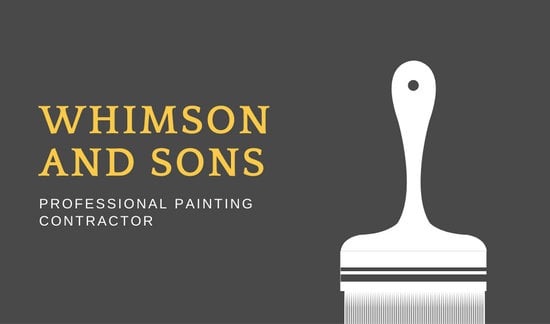Seasonal Consider Industrial Outside Paint: Trick Insights You Need To Understand
Seasonal Consider Industrial Outside Paint: Trick Insights You Need To Understand
Blog Article
Material Created By-Doherty Skafte
When you're intending a commercial exterior painting job, seasonal factors can make or damage your results. You'll want to consider how temperature and moisture influence paint application and drying times. Picking the ideal season can guarantee your paint adheres effectively and lasts much longer. However which seasons are really the very best for this type of work? Let's explore the key elements that can affect your project's success.
The Effect of Temperature Level on Paint Application
When you're planning an industrial outside paint task, the temperature level can considerably affect how well the paint adheres and dries.
Preferably, you want to paint when temperature levels vary between 50 ° F and 85 ° F. If it's also cool, the paint may not heal properly, bring about issues like peeling or splitting.
On the other hand, if it's also hot, the paint can dry also rapidly, protecting against appropriate adhesion and causing an irregular finish.
straight line interiors need to likewise think about the time of day; morning or late afternoon uses cooler temperature levels, which can be more desirable.
Always check the producer's suggestions for the specific paint you're utilizing, as they frequently provide advice on the ideal temperature level range for optimal outcomes.
Moisture and Its Effect on Drying Times
Temperature level isn't the only environmental aspect that influences your business external painting task; moisture plays a considerable duty also. High humidity levels can decrease drying times considerably, affecting the overall top quality of your paint task.
When the air is saturated with dampness, the paint takes longer to treat, which can bring about concerns like bad adhesion and a higher danger of mildew growth. If you're repainting on a specifically humid day, be planned for extensive delay times in between layers.
https://juliusnyhpj.csublogs.com/41379520/discover-a-cosmos-of-colorful-possibility-as-we-share-the-secret-to-improving-your-home-with-the-assistance-of-competent-residence-painters to monitor neighborhood weather and strategy accordingly. Ideally, go for humidity degrees in between 40% and 70% for optimal drying out.
Maintaining these factors in mind guarantees your job remains on track and delivers a long lasting surface.
Best Seasons for Commercial Exterior Painting Projects
What's the best time of year for your commercial exterior paint projects?
Springtime and very early fall are generally your best choices. During these seasons, temperatures are mild, and moisture levels are typically reduced, producing perfect conditions for paint application and drying out.
Prevent summer's intense heat, which can trigger paint to completely dry also quickly, leading to bad attachment and coating. Similarly, winter season's chilly temperatures can hinder appropriate drying out and treating, running the risk of the longevity of your paint job.
linked internet site for days with temperatures between 50 ° F and 85 ° F for optimum results. Bear in mind to inspect the regional weather forecast for rainfall, as damp conditions can wreck your project.
Preparation around these elements guarantees your paint job runs efficiently and lasts much longer.
Conclusion
In conclusion, planning your business outside painting jobs around seasonal factors to consider can make a substantial difference in the end result. By organizing job throughout the excellent temperature levels and moisture degrees, you'll ensure much better adhesion and drying out times. Keep in mind to watch on regional weather forecasts and choose the right time of year-- spring and very early loss are your best options. Taking these actions will help you attain a long lasting and professional coating that lasts.
